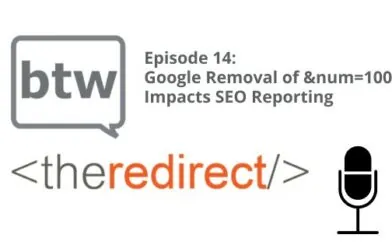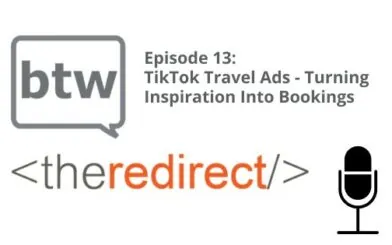Episode 4 / June 2, 2017
In Episode 4 of The Redirect Podcast, we dive into Mary Meeker’s famed Internet Trends Report for 2017 and discuss what it means for search marketers. DMOZ finally goes away, and a focus shift of featured snippets for your users.
Meta Descriptions and Snippets
Jason shared a blog post from the Official Google Webmaster Central Blog called Better Snippets for Your Users. Historically, snippets have been pulled from content on the page, meta page descriptions, and DMOZ directory listings. With DMOZ now closed, there’s even more reason to have well-written meta descriptions on your site if you hope to appear in a snippet on Google results pages (SERPs). (Snippets aside, crafting strong meta descriptions is an easy way to improve click-through rates when your page shows in SERPs.) The Webmaster blog notes there is no character length limit for meta descriptions, but longer descriptions will be truncated when displayed in search results. This presents an opportunity to use meta descriptions to provide the information Google needs for your content to appear as a snippet for relevant user queries.
Related posts: [What is Position Zero in Google?] [Why Meta Page Descriptions Impact SEO]
(Speaking of DMOZ, Patrick also shared an article from Search Engine Land about Google no longer using DMOZ as a source for featured snippets. This was only recently announced, in light of DMOZ officially shutting down back in March. Patrick spent a lot of time in a previous job making submissions to DMOZ, which were hardly ever published in a timely manner. “My submissions from years ago are probably still pending,” he joked.)
Takeaway: We still recommend optimizing your meta descriptions for the ideal character length so they’ll show without truncation in SERPs. We also advise you to write high-quality, human-centered meta descriptions to catch people’s attention and improve the chances of click-through to your site. For pages where there is an opportunity for a featured snippet (the page answers a “who/what/where/when/how/‘how to’ question”), it may be worth testing a longer meta description that would make a good snippet if chosen by Google. It’s also important make sure the description is truncated at an ideal pause in the copy when it shows in SERPs.
Content Marketing Trends & Priorities
Ashley shared some insights from recent content-related articles. Live video is now showing in search results for trending keywords. In their article on search marketing trends for 2017, Search Engine People calls this the “next step forward for video marketing.”
Takeaway: As live video is becoming more popular for marketing purposes, it’s important to optimize it with keywords and rich descriptions.
The same article discusses the importance of creating “bite-sized answers to long-tail questions” when the questions don’t require a detailed answer or explanation. While longform content tends to rank better over time, longer content can easily be overdone or poorly done.
Always optimize for readers – and if readers are looking for quick answers, there can be a lot of value in providing those rather than longform content. Just make sure this is done strategically.
Takeaway: Write for readers first and foremost. Identify longtail questions that have short answers, and answer those questions on your website and social media channels.
Mary Meeker’s 2017 Internet Trends Report
Jason spent some time this week digesting Mary Meeker’s 2017 Internet Trends Report (355 slides!), as well as AdAge’s 12 key takeaways from it. He distilled these down to his three key takeaways from the report:
Takeaways: Mary points out that global smartphone adoption is finally reaching a saturation point – but at the same time, there are also very limited options for non-smartphones with today’s big cellular service providers. Still, this should be enough evidence that optimizing for mobile is crucial for your online marketing.
The time spent using the internet on mobile devices continues to grow. We’re spending about 5+ hours a day with mobile devices, with multiple interactions. This is also why we preach a mobile-first marketing mentality.
Finally, image recognition and voice activation are increasing. Voice recognition was also recently covered in a post at Search Engine Watch. Humans can speak at a rate of 150 words per minute, but only type at 40 words per minute. It’s likely that typing rate is even slower on a mobile device – so why wouldn’t people use voice when it’s quicker and decently accurate? A great infographic, shared in the Search Engine Watch article, notes that voice search’s adoption rate will see its next boom with seamless integration of IoT devices in people’s lives, and when voice recognition reaches at least 99% accuracy.
Thanks for tuning in! To catch future episodes of The Redirect Podcast, subscribe on Soundcloud, iTunes, or Stitcher.




